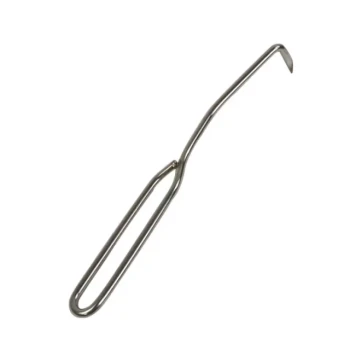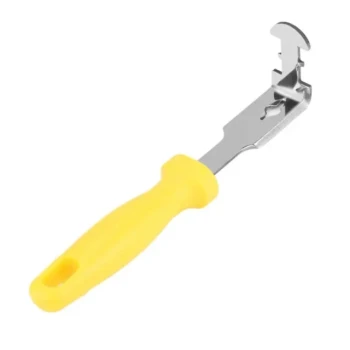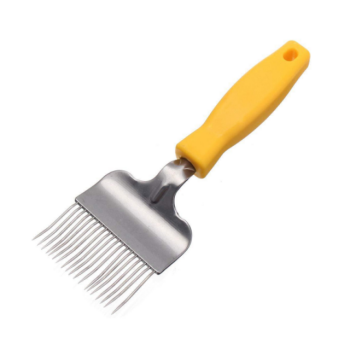At its core, a beekeeping veil protects your face, head, and neck from stings. The primary types are the Fencing veil, the Round veil, and the Square veil. Each design offers a different balance of visibility, comfort, and integration with your other protective gear, with the Fencing and Round styles being the most common choices for modern beekeepers.
The decision between veil types is not about finding the single "best" option, but about understanding the trade-offs between visibility, protection, and convenience. Your choice should align with your personal comfort, your local climate, and how you prefer to work with your bees.
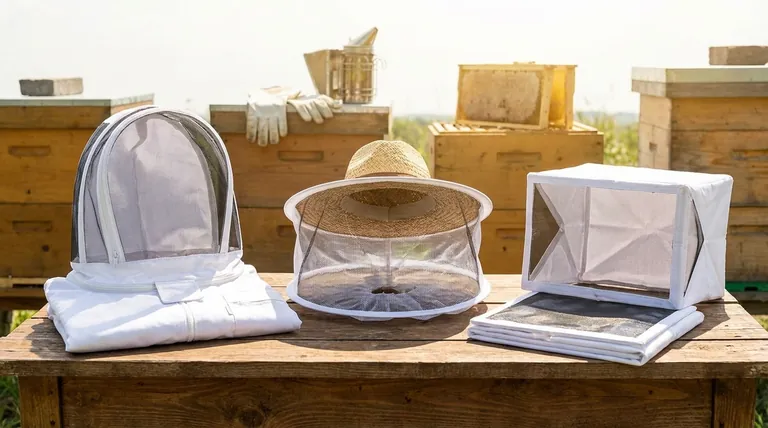
The Three Main Veil Designs
The shape of the veil is the most significant differentiator, directly impacting your field of view and how far the mesh is kept from your face.
The Fencing Veil
This is arguably the most popular modern design, often compared to the hood of a fencing mask or a hoodie. It is typically integrated directly into a beekeeping jacket or full suit, zipping on and off.
It uses internal hoops to hold the mesh away from your face in the front and on the sides. This design is easy to flip back and out of the way when you are not near the hive.
The Round Veil
This traditional design offers a 360-degree view and maximum ventilation. It is structured by a large, circular brim, similar to a wide-brimmed sun hat, which keeps the mesh an equal distance from your head on all sides.
Because it holds the mesh farthest from your skin, many beekeepers consider the Round veil to offer the best protection against direct stings.
The Square Veil
As the name implies, this veil is constructed with panels that allow it to be folded flat, making it the most compact option for storage.
It provides a wide frontal view but can have blind spots on the periphery where the fabric side panels are. This is a functional, often budget-friendly choice. An older variant, the Alexander veil, is similar but typically features a cloth top and an elastic headband.
How Veils Attach
Beyond the shape, the method of attachment is a critical factor. This determines whether your veil is a standalone piece of equipment or part of a larger garment.
Integrated with a Jacket or Suit
Most Fencing veils, and some Round veils, are designed to zip directly onto the collar of a bee jacket or a full bee suit. This creates a secure, sealed system that prevents bees from crawling in.
This integration is highly convenient and is the standard for most beekeepers today.
Designed for a Separate Hat
Traditional Round and Square veils are designed to be worn over a separate, wide-brimmed helmet or hat. They are open at the top and have a drawstring or elastic band to secure them around the hat's crown.
This setup is versatile but requires you to purchase and manage two separate pieces of equipment.
Understanding the Trade-offs
Choosing a veil involves balancing competing priorities. What works best in a cool climate for a cautious beginner may not be ideal for an experienced beekeeper in a hot region.
Protection vs. Proximity
A Round veil, worn over a wide-brimmed hat, offers superior protection by keeping the mesh screen as far from your face and neck as possible.
A Fencing veil sits closer to your head, especially at the back and sides. While perfectly safe, a determined bee could theoretically sting through the mesh if it's pressed against your skin.
Visibility vs. Airflow
The Round veil provides excellent, unobstructed 360-degree vision and the best possible airflow, making it a preferred choice in hot climates.
The Fencing veil offers excellent peripheral vision to the front and sides, but the solid fabric back can reduce airflow. The Square veil provides a good forward view but can create side blind spots.
Convenience vs. Bulk
Integrated Fencing veils are the peak of convenience. They are part of the jacket, easy to flip on and off, and you can't forget to bring one.
Round veils are the bulkiest. Their rigid structure makes them difficult to store or transport compactly. Square veils are the opposite, folding flat for easy storage.
Making the Right Choice for Your Goal
Your personal beekeeping goals should guide your selection.
- If your primary focus is maximum sting protection and ventilation: Choose a Round veil worn over a separate, wide-brimmed hat to keep the mesh far from your skin.
- If your primary focus is all-in-one convenience and good visibility: A Fencing veil integrated into a bee jacket or suit is the most popular and practical modern choice.
- If your primary focus is compact storage and affordability: A folding Square veil is a simple and effective solution that gets the job done.
Ultimately, the best veil is the one you will wear consistently and correctly for every single hive inspection.
Summary Table:
| Veil Type | Best For | Key Feature | Key Trade-off |
|---|---|---|---|
| Fencing Veil | Convenience & Integration | Zips onto a jacket/suit | Mesh sits closer to head/sides |
| Round Veil | Maximum Protection & Ventilation | 360° view, mesh kept far from face | Bulkiest, less convenient to store |
| Square Veil | Affordability & Compact Storage | Folds flat for easy transport | Potential side blind spots |
Equip your apiary with the right protection.
At HONESTBEE, we supply commercial apiaries and beekeeping equipment distributors with high-quality, durable veils and full protective suits designed for professional use. Our products are built to enhance safety and comfort during hive inspections, boosting your operational efficiency.
Let's discuss your specific needs and ensure your team has the best gear.
Contact our wholesale team today for a quote!
Visual Guide
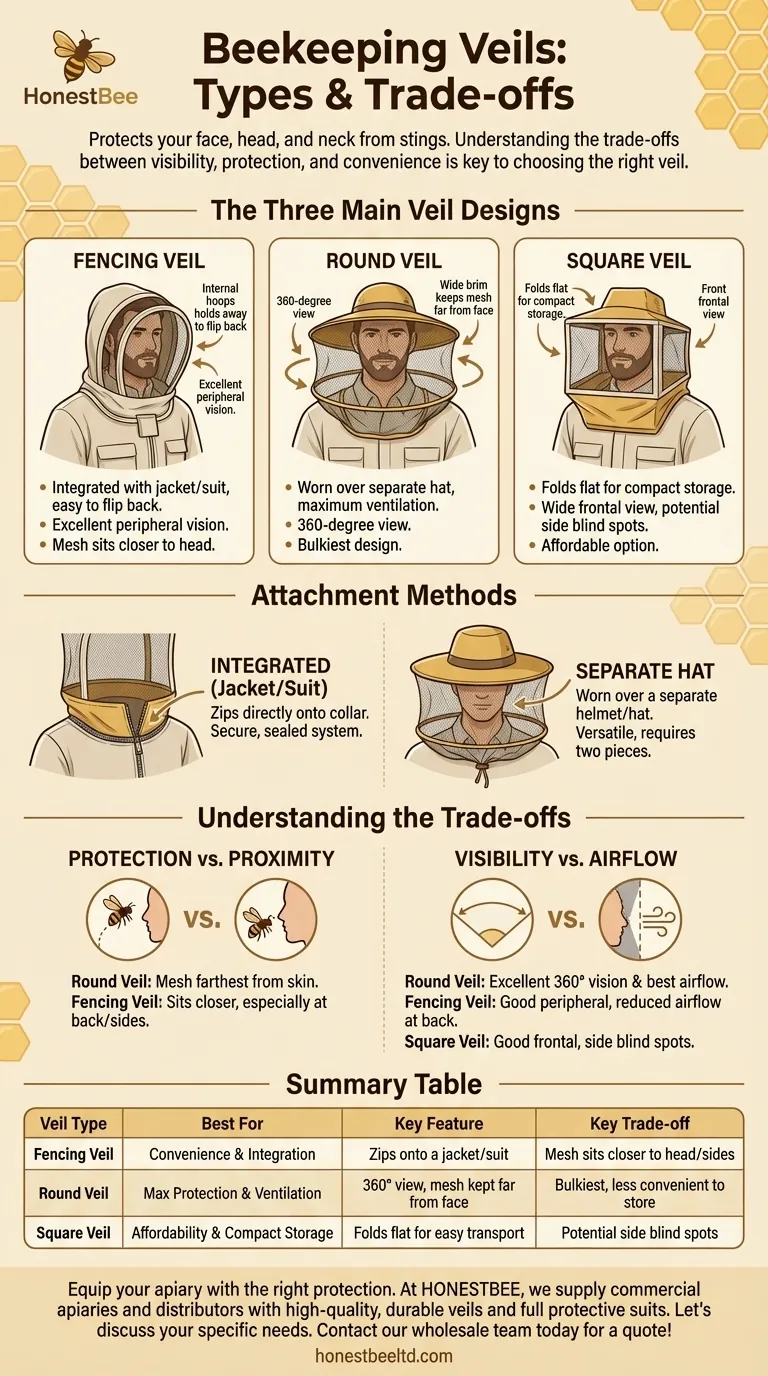
Related Products
- Cotton Folding Square Beekeeping Hat and Veil with Removable Mesh Bee-Proof Design
- Ventilated Adult Beekeeping Helmet Hat for Beekeepers
- Wholesales Dadant Size Wooden Bee Hives for Beekeeping
- Professional Insulated Plastic Bee Hives
- Yellow Plastic Bucket Pail Perch for Beekeeping
People Also Ask
- What types of protective veils are available for beekeeping? Choose the Best for Your Safety & Comfort
- Which type of bee veil offers the best protection? Maximize Safety with Proper Space and Design
- What factors should be considered when purchasing a beekeeping suit or jacket? Your Guide to Safety and Comfort
- What is the function of a beekeeper hat and veil? Essential Head & Face Protection for Beekeepers
- How can I keep ants out of my honey? A Simple, Permanent Solution














